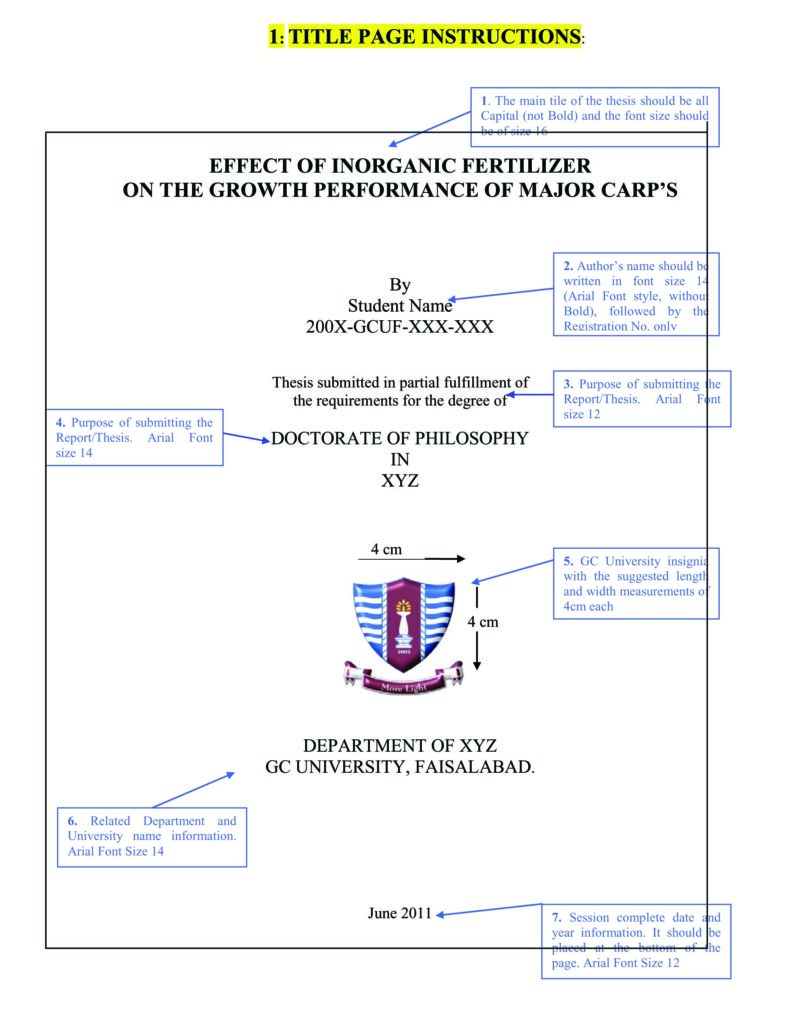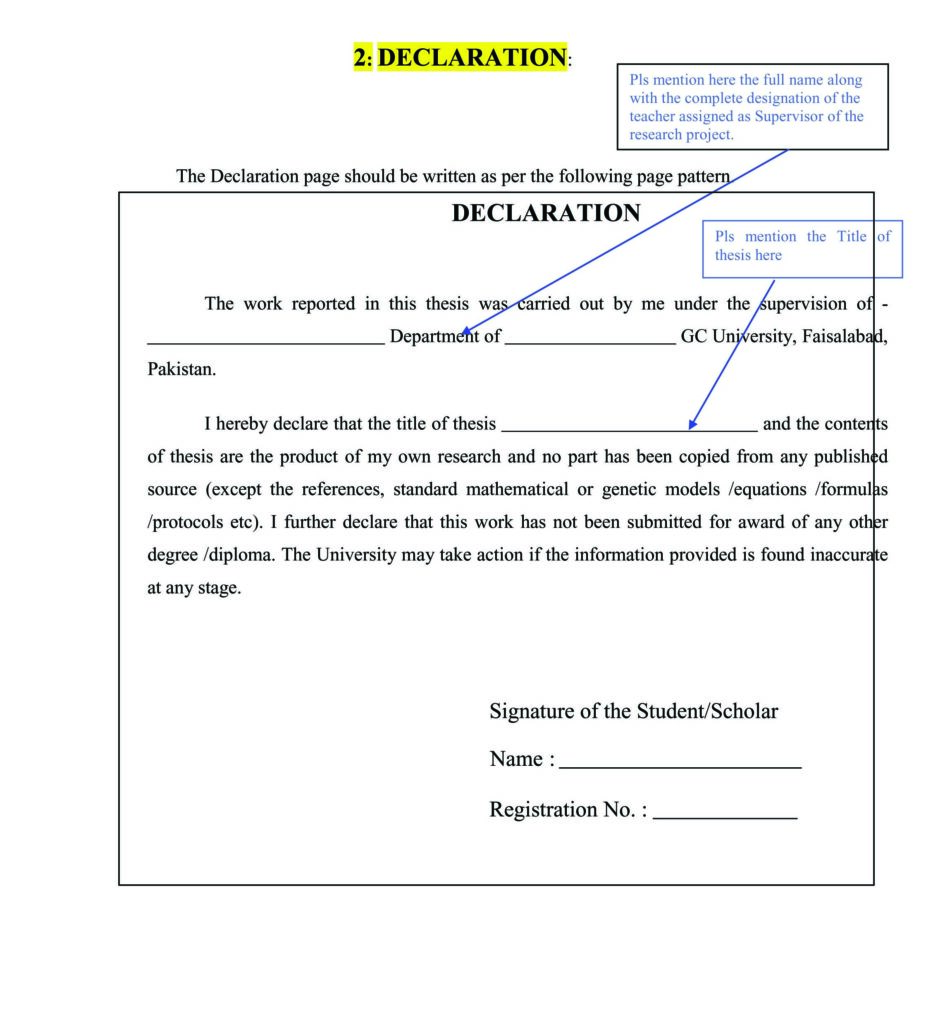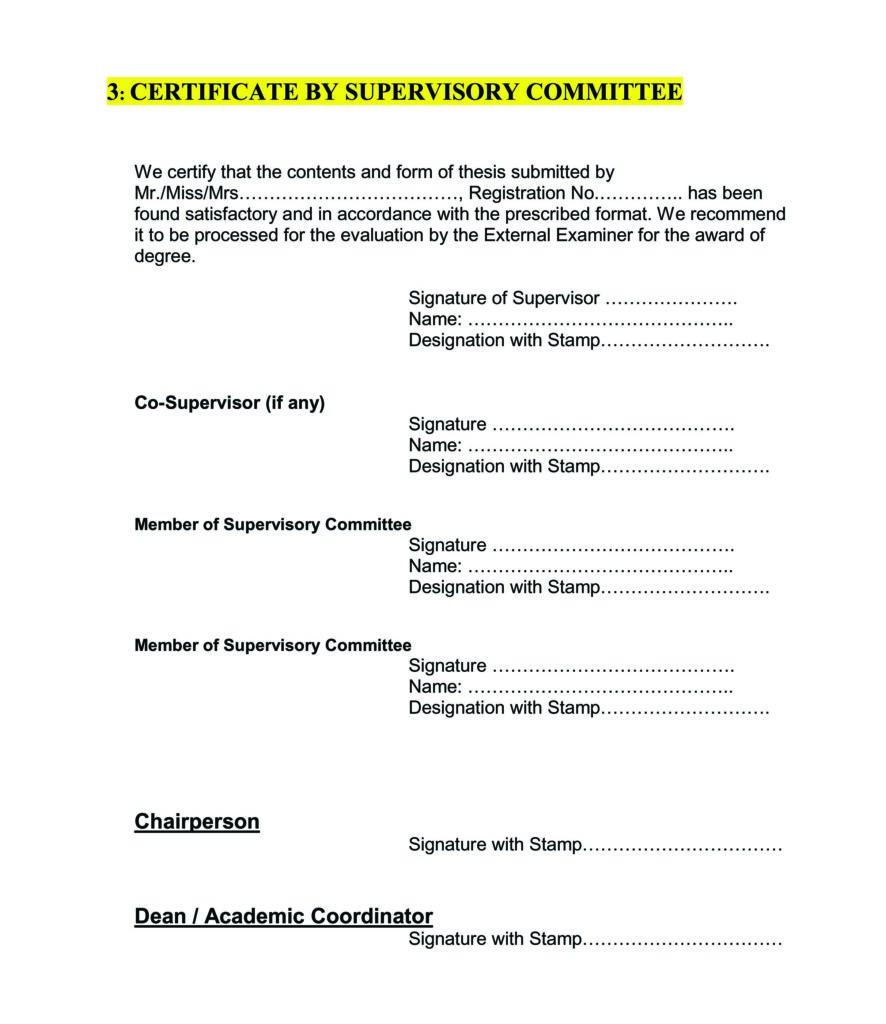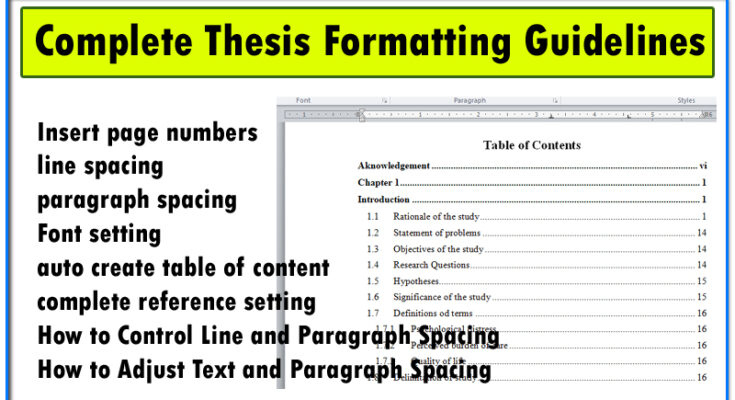If you want to set up your thesis, I will complete the thesis formatting guidelines and all the thesis setting steps.
Thesis content should follow the prescribed order:
- Title Page
- Dedication (optional)
- Declaration
- Certificate by the Supervisory Committee
- Contents
- Acknowledgements
- List of Abbreviations (if any)
- Abstract
- Introduction
- Review of Literature
- Materials and Methods
- Results
- Discussion
- Summary
- References
- Appendices (if any)
Paper of A4 size is mandated. Each side should have a one-inch margin, except for the left margin, which should be 1.25 inches.
Font style is Time New Roman; main heading font size is 16; sub heading font size is 14; and General text font size is 12. line spacing 1.5.



How to Write Reference APA 7th Edition Style
How to Automatic Number Chapters and Sections in Thesis Microsoft Word
I. Thesis Volume
When crafting a thesis, it is crucial for students to consider the economy of space, labor, time, and clarity in presentation. Elaborate descriptions and unnecessary discourses, while potentially tempting, contribute little to the scholarly standard. The scientific study mandates a straightforward, objective depiction of phenomena and interpretation of results. Therefore, it is essential to exercise careful control over the bulk of the thesis, aiming for approximately 75-100 pages for M.A/M.Sc. or M.Phil./MS theses, and 150-200 pages for Ph.D. dissertations in experimental, social, and descriptive sciences, including appendices and tables (excluding illustrations). This volume allows for the incorporation and digestion of a substantial amount of scientific information.
II. English Usage and Grammar
In scientific writing, preference is given to the use of the past tense. Students are accountable for maintaining correct English usage and grammar. Embracing concise sentences, consisting of 25-30 words, is advisable. A well-constructed sentence focuses on describing one thing at a time, employing minimal words. For assistance in this aspect, students may seek help from proficient individuals.
III. Abbreviations
Acceptable abbreviations can be utilized in footnotes, tables, and references. To enhance space and time efficiency, it is convenient to employ abbreviations for frequently used scientific terms or phrases. Such abbreviations should be presented in parentheses immediately after the words or phrases they represent. For instance, “Phosphate Buffered Saline (PBS) was used in all dialysis operations.” Subsequently, throughout the thesis, the initials PBS can be used in lieu of the words phosphate buffered saline.
IV. Typing Directions
The use of good-quality white bond paper of A4 size is mandated. Each side should have a one-inch margin, except for the left margin, which should be 1.25 inches. While typing, no headers or footers should be included, and no extra margin should be left within the marked margin. The recommended font style throughout the thesis is “New Times Roman,” with main headings in font size 16 and capitalized, while subheadings and general text should be in font size 14 and 12, respectively.
V. Pagination
All pages must be numbered. Roman numerals (i, ii, iii, iv, v, vi, etc.) should be used for abstract and acknowledgments, while Arabic numbers (1, 2, 3, 4, 5, etc.) should be used for pages from the introduction onward. Page numbers should be centered at the bottom of each page.
Order of Contents in the Thesis/Research Reports
Urdu Thesis Setting Details
thesis-1English Thesis Setting Details
thesis-2



